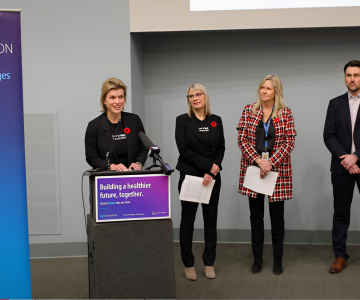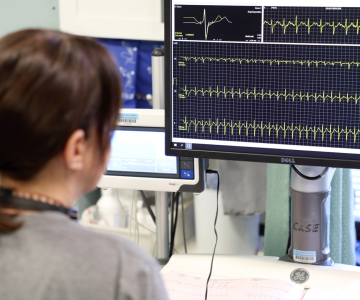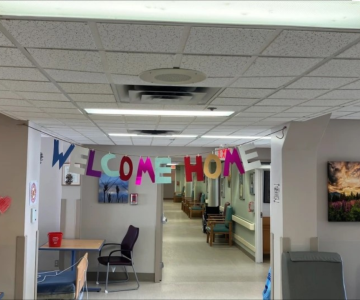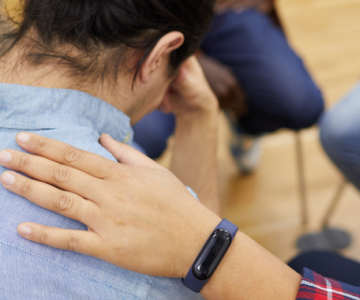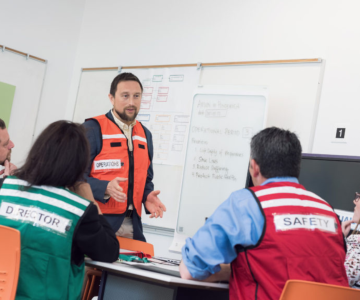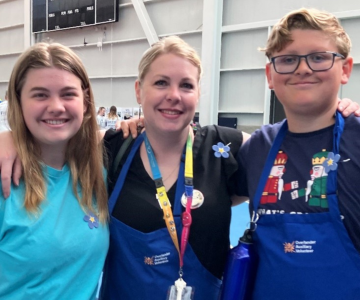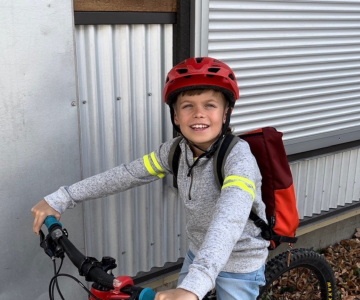Breadcrumb
Explore Stories
6 Minute Read
Community & Culture
Foundations in the Interior region raise funds that support medical equipment, care needs, and innovative local initiatives in their communities. Each organization includes respected community leaders, volunteers and staff who are passionate about meeting the needs of patients and families in Interior Health. Thanks to the generosity of their supporters, we all have a stronger health system.
In this next story of our series on the incredible health-care and hospital foundations throughout our region, we interviewed Allison (Allie) Young, CEO of KGH Foundation.
3 Minute Read
Community & Culture
Name: Lauren Isber (she/her/hers)Job Title: Digital Health Support ClerkYears of Service: 3Worksite: Kelowna WarehouseCommunity: KelownaAncestral Territory: Syilx NationFavourite Quote / Advice to live by: I try to live in the present, plan for the future but not worry about things that do not exist. Be optimistic!
Lauren Isber knows a thing or two about navigating the health-care system.
Born in Savannah, Georgia, U.S., to Canadian health-care worker parents, as well as being a patient herself, Lauren currently provides support to Interior Health (IH) patients and clients who need help making medical appointments or using MyHealthPortal.
Through her role as a digital health support clerk, she’s able to help individuals in a personal way, which brings her satisfaction and a sense of purpose and value.
“We all know what it’s like when we need assistance with something and don’t have an option to speak to a person directly.”
2 Minute Read
Health & Wellness
Cardiac patients at times face life-or-death situations and need timely care. In Salmon Arm, they are receiving that quick care thanks to the work of the cardiology team.
After watching wait times for stress tests and Holter monitoring grow, the team readjusted schedules and reprioritized resources to provide the timely care needed.
“Patients come to the emergency room in Salmon Arm with chest pain. They need a stress test to make sure it’s not a heart attack or angina,” notes Dr. Laurie Main, general internist at Shuswap Lake General Hospital.
Dr. Main says patients were returning home after a visit to the emergency room with few answers about the status of their heart. They were also waiting up to a month to get a stress test, compared to the mandated wait time of two weeks.
“Before, patients would go home and have no idea what’s going on with their heart and wait weeks on end to get their stress test,” she says.
Now, patients are waiting just days.
Increasing the number of Holter monitors from eight to 20 has allowed the hospital to reduce wait times by almost 23 per cent and increase capacity for stress testing by 44 per cent.
The team also spent time optimizing the scheduling process to accommodate additional patients.
“Our cardiac technologists said, ‘Well, we don’t really need that much time to get the patient on a treadmill and get the stress test done,’” says Dr. Main. “We worked on scheduling optimization, reducing the time spent on each test, so we are able to see one more patient a day for the treadmill.” Doing that every day of the week allows five more patients to have their tests while using existing resources she explains.
Patients like Victor Hooper, who has a history of cardiac issues and often needs immediate care to be monitored, have noticed the positive changes.
“It’s really good. In the last three months, I’ve been in three times for cardioversions because I went into [atrial fibrillation], and they run me through and get it done,” he says. “They’re on it. [The process] works really well. The nurses and doctors are amazing.”
2 Minute Read
Community & Culture
Evacuations and repatriations—returning people to their long-term care homes—are complex and multi-faceted processes that take dedication, compassion and the teamwork of many different people and partners to succeed.
In part two of our two-part story on evacuations and repatriations, we highlight some of the stories of those who returned to their long-term care homes, and those who helped get them there safely.
Residents who were evacuated returned to Lillooet (Aug. 9), Ashcroft (Aug. 10) and New Denver (Aug. 15). These residents showed resilience during the evacuation and during their time away, while IH staff demonstrated their commitment to compassionate care.
3 Minute Read
Community & Culture
* Content warning: This story contains themes of suicide. *
For immediate help 24/7, call 9-8-8 or 1-800-SUICIDE (1-800-784-2433). If you or your friend is in crisis and not sure what to do, call 911 or go to the nearest emergency department. To reach the Interior Health (IH) Mental Health and Substance Use (MHSU) centre nearest you, call 310-MHSU (6478).
Name: Sheneile Black (she/her/hers)Job Title: Relational Security OfficerYears of Service: 1Worksite: Kelowna General Hospital Community: Central OkanaganAncestral Territory: Syilx Nation Favourite Quote / Advice to live by: Prayer and work conquers all.
Sometimes in life, the most challenging upbringings can create the kindest and most compassionate people; this was the case for Sheneile. Growing up in Jamaica with her older sister, Sheneile lost both her parents at a young age.
4 Minute Read
Health & Wellness
For caregivers supporting loved ones affected by substance use, the journey can feel like a lonely one. Whether a mom, dad, grandparent, spouse, sibling or friend, caregivers shoulder worry, shame, guilt and despair.
Holding Hope Peer Support Groups were founded by Moms Stop the Harm (MSTH), a network of Canadian families affected by substance use-related harms and deaths. The support groups provide a safe space for caregivers to come together to share stories and resources without stigma, and to build strength and resilience.
“Holding Hope groups are about walking the same journey as other caregivers – without stigma, without judgement," says Jacquie Huser, project coordinator for Interior Parent Peer Support. "The groups offer an opportunity to feel less alone on a challenging, difficult journey.”
4 Minute Read
Community & Culture
On Thursday, July 25, Interior Health started a precautionary evacuation of residents of The Pavilion long-term care home in New Denver.
Nearby Silverton—a small town of 200 on Slocan Lake—had already been issued an evacuation order the day before due to the advancing Aylwin Creek fire. By mid-afternoon on July 25, New Denver was on an evacuation alert.
In this first of our two-part story on evacuations and repatriation, get a glimpse into how an Emergency Operations Centre (EOC) works. Read a behind-the-scenes, first-person account of the evacuation in New Denver from Lisa Keech, a critical care nurse on the High Acuity Response Team at Kootenay Boundary Regional Hospital in Trail.
3 Minute Read
Community & Culture
Name: Erin Blackwell (she/hers/her)Job Title: Manager of Clinical Operations, Neuro, Trauma and Stroke UnitYears of Service: 7Worksite: Royal Inland HospitalCommunity: KamloopsAncestral Territory: SecwempcFavourite Quote / Advice to live by: Think globally, act locally.
Erin Blackwell, manager of clinical operations, Neuro, Trauma and Stroke Unit at Royal Inland Hospital (RIH) in Kamloops is someone who truly lives by her motto “think globally, act locally.”
Erin is very passionate about diversity and inclusion in the workplace. So much so, she successfully advocated for rainbow lanyards and rainbow nametags to become available to all staff to promote inclusivity at Interior Health (IH).
“Symbols are important in society, and the rainbow symbolizes acceptance and openness. Health care should be the most inclusive system, as our patients come from all walks of life,” says Erin.
4 Minute Read
Health & Wellness
Next week, kids in B.C. are headed back to school. Leaving the car at home and choosing active ways to get to school is not only good for kids’ health, but lessens pollution and reduces vehicle congestion around schools.
Walking, biking, riding a scooter, skateboarding and even rollerblading/rollerskating are popular ways to get to school or work. A little planning ahead—and these safety reminders—can make sure your kids get to school safely.
“Planning how your child will get to school on foot, by bike or by scooter before the first day of school can help reduce the risk of injuries,” says Dr. Silvina Mema, deputy chief medical health officer for IH. “Practise walking or riding with your child to school while sharing safety reminders. Have everything ready the night before so you’re not rushing out the door.”
-
Load More
Showing 36 of 677
STAY CONNECTED
Receive news and alert posts, and Stories@IH blog posts, right to your inbox!

